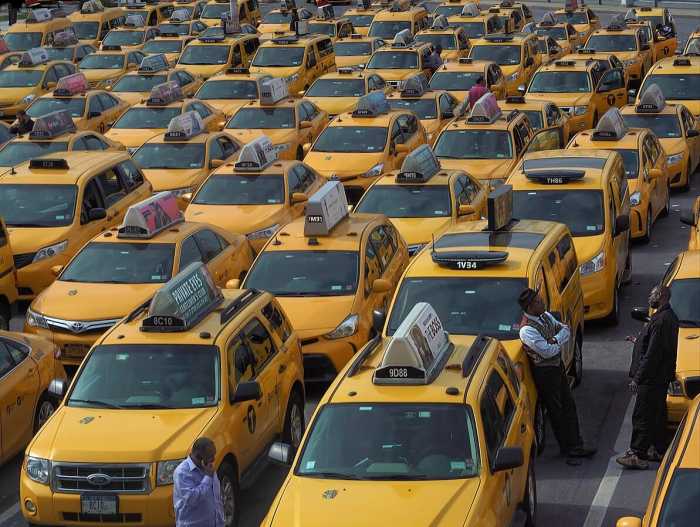
Alicia Love, 24, has her phone plugged into one of the city’s new LinkNYC kiosks in midtown.
She says she forgot her charger and was glad to have this available. With her three children clustered around her as she charges, she says she often uses the kiosks to “catch Wi-Fi” — the devices emit a strong Wi-Fi signal, available for free in exchange for entering your email.
But use the device’s main attraction, the tablet screen?
“Never,” the Bronx resident says, glancing at a man, who gave his name as Mike M., squatting on the sidewalk in front of the tablet at that moment.
“I don’t want to stand there and listen to music,” Love says, adding that the street is so loud and it’s not possible to get comfortable.
That doesn’t bother Mike, who has been hopping from kiosk to kiosk in a four block radius for the past hour, lugging a large Adidas bag with him and quickly logging onto YouTube.
The Link kiosks are meant to be 21st century versions of the city’s once ubiquitous and vital pay phone network. And like pay phones today, they seem to be most used by the homeless and others who spend the majority of their time on the street.
Like a library, without books (or chairs)
Some 350 kiosks already have been installed, mostly in Manhattan, but also a few in Queens and the Bronx, with more planned for all five boroughs in the coming months.
The kiosks are the product of a public-private partnership called CityBridge, a consortium of tech companies that includes one investment from Alphabet, Google’s parent company.
By far, the most common use of the kiosks is to snag free Wi-Fi: the kiosks log just over 1,000,000 Wi-Fi sessions per week, according to CityBridge. By comparison, the built-in tablets get closer to 60,000 uses per week.
But it’s those physically standing at the terminals who make the largest impression.
Mayor Bill de Blasio has said the program will help bring internet to people who don’t have regular access.
For some homeless individuals, the kiosks let them call friends and relatives — a precious commodity when mobile phones are stolen or run out of minutes.
For others, it’s the ability to pass the time with an easily accessible if sometimes smudged screen. Mostly ignoring the bookmarks programmed into the tablet — 311, MTA, NYC.gov — they head to YouTube or social media websites.
In this way, the kiosks are becoming the outdoor corollary of computer time at the city’s public libraries, without (for now) time restrictions or closing hours or anti-smoking policies.
A work in progress
The system is still in “beta,” a fact announced by an anxious golden strip at the top corner: as if to say, we’re still working this out.
Since the kiosks were announced, there have been concerns about privacy and who owns the troves of data collected by the kiosks: email addresses, browsing history and phone calls. The consortium is in talks with the city to revise its privacy policy.
One change since the program began in January involves the tablets’ sound settings. After complaints, CityBridge lowered the max volume between 9 p.m. to 7 a.m., according to a spokesman.
“Way too low,” says Derrick Nesby, 54, a regular LinkNYC user. He goes for the “old school R&B,” and doesn’t always have headphones with him. He says he’s been homeless for about six months, and uses the terminal near his job and a program he attends.
The machines provide access to a world of music, he says, as well as “research” — about the presidential race, for example, which he reads up on from time to time. He says some people abuse the machines, staying on for too long. And the machines make it difficult to stay online, requiring periodic taps on the screen when “continue session” messages pop up.
Like the rest of NYC, rules written and unwritten are in the process of being developed about this aspect of street living.
Nesby says some stores’ security personnel nudge him and other users away from the kiosks, particularly when they form a crowd blocking sidewalks, or gather to charge their cellphones.
Pushing the volume up on “Love Come Down,” by Evelyn “Champagne” King, Nesby says when you stay close to the tablet and don’t look up anything too controversial, people leave you alone.
After all, the passersby’s eyes are glued to their personal screens, too.







































